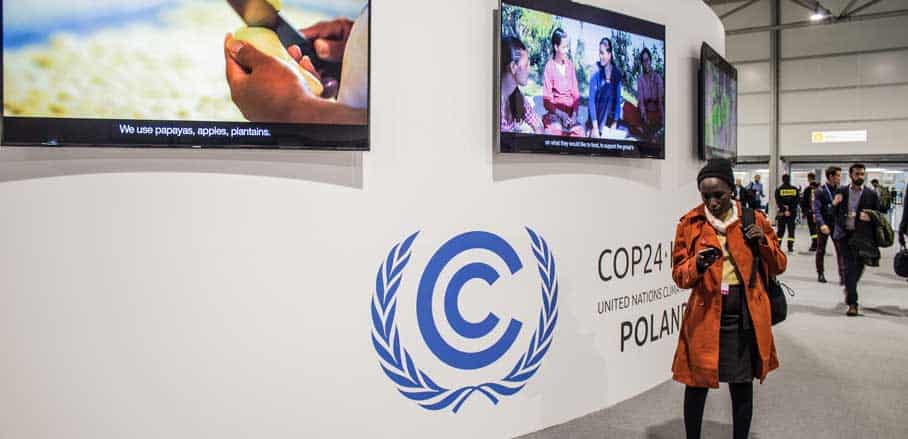COP24: What Does it Mean for Cities and Regions?
COP24 in Katowice, Poland, has come to an end. Environmental journalist Lou del Bello sums up what its outcomes hold for cities and regions.
Missed Opportunities
Once again, the UN climate talks have missed the opportunity to formally recognise the role of cities and regions, and thus of those actors that are responsible for managing and bringing down the highest amount of global emissions. After a night of overtime, during which delegates from the UN member countries managed to overcome key differences on issues such as transparency in the emission reporting process and carbon credits, the final draft of the much-awaited rulebook was published—without mentioning local actors.
This will disappoint many of those who were hoping to see the Nationally Determined Contributions finally complemented officially by a new set of Locally Determined Contributions, which would have held an opportunity for cities to improve on their countries’ commitments.
Despite this lack of recognition and despite being absent from this year’s final outcome, cities and regions reaffirmed their role as key actors in the climate response space, calling for greater integration of local and national climate goals within the Paris Agreement architecture.
A Decisive Role
The European Committee of the Regions, who came to Katowice with the clear mission to see the role of regions and cities formally recognised, issued a statement reminding readers that “cities account for 70 per cent of world greenhouse emissions, with local governments being responsible for more than 70 per cent of climate change reduction measures and up to 90 per cent of climate adaptation actions.”
Brooke Flanagan, an environmental project coordinator for the network Eurocities, which brings together 145 of the biggest cities in Europe, noted that not only are cities responsible for this high amount of the world’s carbon budget, but are also the ones who take ownership of planning and actions. “They are the ones that are doing a lot of the work in the communities,” she says. “But we are not really involved in developing the [national] negotiating position and I think that cities should be integral to this position as well.”
A Disaster for Vulnerable Communities
An aspect that felt particularly troubling for those most affected by climate change was the lack of a firm consensus on the science underpinning the problem, as published in the landmark IPCC 1.5C report. The study has been described as the most comprehensive one to be currently available on the subject. It shows how a seemingly small difference of 0.5°C in average temperatures could dramatically worsen the already unavoidable damages caused by a changing climate.
Crucially, the report also shows that even the ambitious goal of limiting global warming to 1.5°C already spells disaster for many vulnerable communities across the world.
Europe, while being relatively well equipped to respond to environmental shocks thanks to a strong economy and advanced climate change preparedness, is not immune from extremes that have already cost the lives of thousands of people. Flanagan offered the example of cities in Spain and Portugal who are dealing with unprecedented heatwaves and droughts during summers.
“They are already working on becoming more resilient, for example by looking at nature-based solutions as well as other innovative forms of management.” But in the end, she says, they are the ones that are closest to people. Far from being a theoretical exercise, recognising the science behind this global trend is important to mayors as well as citizens.
Scientific Evidence vs. Political Agendas
“There are some countries, mainly oil dominant economies, who do not want to welcome the findings,” says Vaibhav Gupta, senior programme lead for the Council on Energy, Environment and Water in Delhi, India. “Obviously, as this may dent their fossil-driven economic growth, they chose to acknowledge the effort made by authors, [but] not the findings per se,” he explains. “They contest whether science should drive progress, or politics. Obviously, [it should be] science.”
Sustainable Cities are Key to the SDGs
Francois Martel, secretary general of the Pacific Island Development Forum, also highlighted the importance of recognising new scientific evidence that adds urgency to the climate struggle at a local level. He says that in Samoa, his home country, cities are smaller and “would be the equivalent of towns and villages” in other parts of the world. But their small size and their particular vulnerability to weather extremes makes them the perfect testing ground for innovation—innovation that could one day be scaled up, he says.
“I think the Pacific Islands have now embraced the concept of sustainable cities as part of implementing the sustainable development goals,” he says, “and whenever the Pacific Islands are trying to balance the benefits of a high ambition transition [versus a low risk approach] they always choose the former, even if it can be difficult sometimes.”
“There are more opportunities in our cities and communities to have impact at scale, because we are small,” Martel notes. This means that cities can invest a smaller amount of funding to obtain greater results faster. “There is a tradition within the Pacific Islands to have a strong consultative process, to engage the general public, the civil society, and the private sector,” he says. “I think this is a good example of how you build consensus through participation.”
This year’s COP may have been a missed chance for climate diplomacy to put cities at the heart of its official proceedings. However, cities remain a laboratory for innovative solutions that are already finding their way into mainstream conversations beyond the sphere of national politics.
- COP27: Equipping Today’s Cities for Tomorrow’s Climate Crises - 21. November 2022
- At COP26, Cities were Climate Action Watchdogs - 23. November 2021
- COP24: What Does it Mean for Cities and Regions? - 17. December 2018
